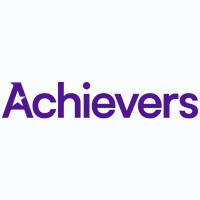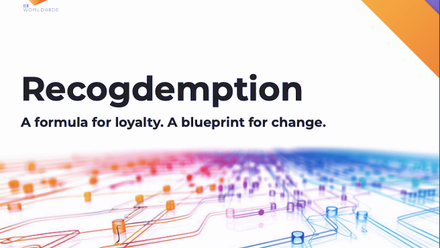Recognising employees in a remote-first world
Whether we’re working from home or at a cafe down the road, the workplace has evolved, and remote work is here to stay.
With teams now scattered across the country (or the globe), the traditional ways of showing appreciation won’t cut it anymore.
Recognition matters more than ever, as remote workers can easily feel like they’re out of sight, out of mind, which can impact motivation and connection.
It is for these reasons that employers need to design a recognition programme that bridges the distance and ensures every employee feels seen.
Why recognition is critical in a remote-first world
While working from home offers clear perks, such as less time spent commuting and more control over how the day’s structured — it can also leave employees feeling invisible.
Fewer spontaneous chats and casual check-ins mean that many people are left wondering if anyone’s even noticing their work.
For those working mostly independently, that recognition is even more important.
Recent trends in the UK workforce show that while people increasingly want flexibility, they’re also looking for meaningful connections with their colleagues and leaders.
Recognition helps to bridge that gap, reinforcing that everyone’s contributions are valued and making them feel truly part of the team.
Without it, motivation dips, productivity suffers and the risk of burnout rises.
Key principles of effective remote recognition
Building a remote recognition programme that actually works comes down to a few simple principles to ensure appreciation feels meaningful and fits seamlessly into the day-to-day.
Here’s a quick list to guide you:
- Timely: Recognition packs the biggest punch when it’s given promptly. Celebrating wins straight away reinforces good habits while also showing people their efforts aren’t going unnoticed — boosting motivation before enthusiasm fades.
- Frequent: Keeping appreciation flowing regularly helps make positive feedback part of the daily workflow, rather than something that only pops up at scheduled, formal meetings.
- Inclusive: Recognition shouldn’t be reserved for the stars of the show. Giving shout-outs to all team members keeps things fair and helps morale stay healthy across the board.
- Authentic: Personalised and specific recognition beats a generic pat on the back every time. Taking a moment to mention what someone did well builds real trust and connection, rather than sounding like you’re reading from a script.
- Visible: Public recognition doubles the good vibes. Sharing successes encourages others to join in, sparking a positive chain reaction across the team.
- Integrated: Recognition should be baked into daily routines and communication, so it feels like second nature. This helps it become a seamless part of how the team operates every day.
Digital-first recognition: Tools and strategies
In a remote-first world, digital tools keep teams connected and make sure appreciation doesn’t get lost in the shuffle.
Here a few tools you can use:
- Recognition platforms: Enable instant, real-time appreciation across teams, while fun features like points and leaderboards keep motivation high. They help transform recognition from a tick-box exercise into something that actually energises the team.
- Peer-to-peer recognition: When appreciation flows from everyone (not just management), it creates a culture where people feel encouraged to cheer each other on. This not only boosts morale but also helps build stronger, more supportive connections across teams — even when they’re far flung.
- Virtual celebrations: Monthly shout-outs, award ceremonies, or a “Wall of Appreciation” gives everyone a chance to come together, share a laugh, and spotlight achievements that might otherwise fly under the radar.
- Micro-recognition: Small, consistent acknowledgements — like a quick thank-you note — keep recognition feeling fresh and remind people they’re appreciated. It makes kindness and encouragement part of everyday life.
- Personalised rewards: Tailoring rewards to what employees actually want makes them feel properly seen and appreciated. It’s a nice way to show you notice and value what people authentically bring to the table.
Overcoming common challenges
Even the best recognition programmes can stumble if common challenges aren’t addressed.
Here’s how to overcome some of the most frequent hurdles in a remote-first environment:
- Ensuring visibility: Make it a habit to check in regularly and use digital platforms that highlight contributions from all employees. Scheduling routine updates or virtual spotlight moments helps prevent anyone from slipping under the radar.
- Maintaining authenticity: Avoid generic phrases and go for personalised messages that call out specific achievements or qualities. It’s a simple way to build trust and show people you genuinely care.
- Avoiding favouritism: Set clear, easy-to-understand criteria for recognition and encourage everyone to join in. This reduces bias and helps keep things fair and balanced across the team.
- Driving participation: Get managers and peers on board by making recognition part of daily habits — offering easy ways to say thanks. A bit of training and gentle reminders can help keep things rolling.
Measuring success: How to track and refine your approach
To make sure your recognition programme hits the mark, you need clear ways to track what’s working — and what isn’t.
Here are some practical steps to measure impact and tweak your strategy for better results:
- Employee feedback: Check in with pulse surveys to see how employees truly feel about your approach to recognition.
- Engagement metrics: Keep an eye on things like retention, productivity, and morale to spot how recognition is making a difference.
- Recognition data: Track who’s getting recognised and spot any gaps or quiet corners that need more attention.
- Iterate and improve: Use what you learn to tweak your approach, keeping your recognition strategies always fresh and effective.
Creating a culture of recognition in a remote-first world
Building a culture where recognition flows naturally transforms how teams connect and thrive.
It’s more than just a scheme — it’s a way to deepen engagement, boost well-being, and improve overall morale.
Take the time to evaluate your current recognition efforts and make appreciation an effortless habit that’s a part of the daily workflow.
It’s a cultural shift that can transform remote teams from feeling isolated to feeling truly valued and motivated.
Supplied by REBA Associate Member, Achievers
Achievers is an enterprise Recognition and Reward software with non-monetary and monetary recognition and a global reward marketplace.








